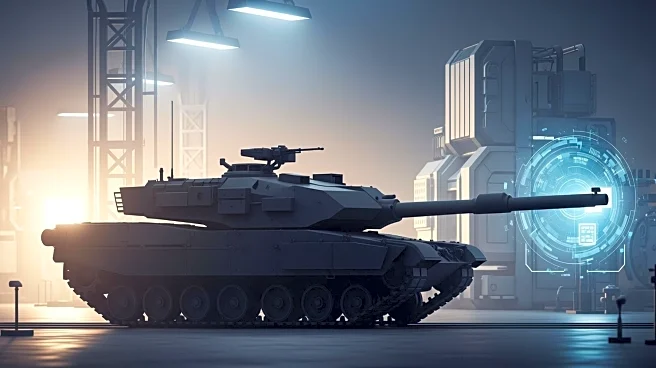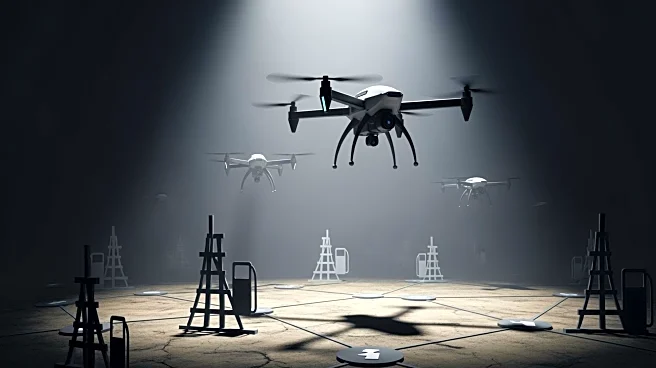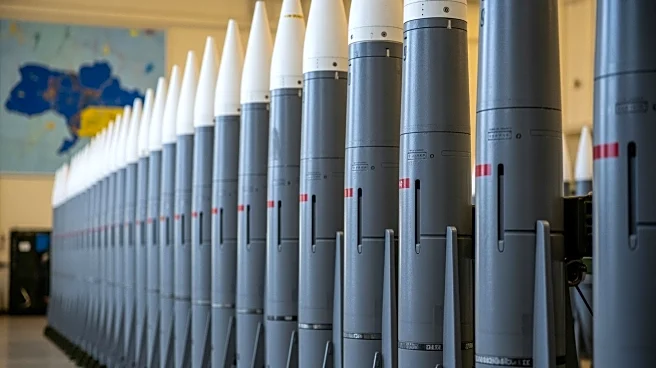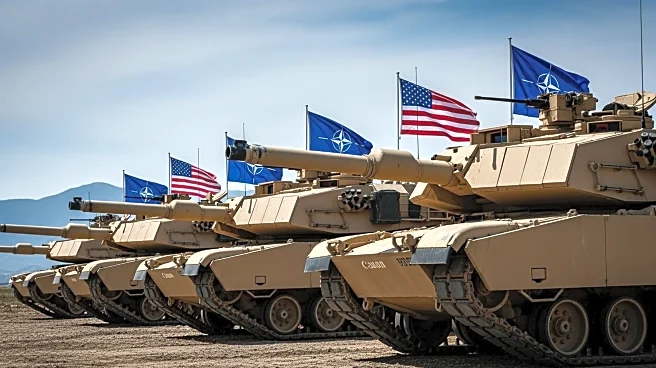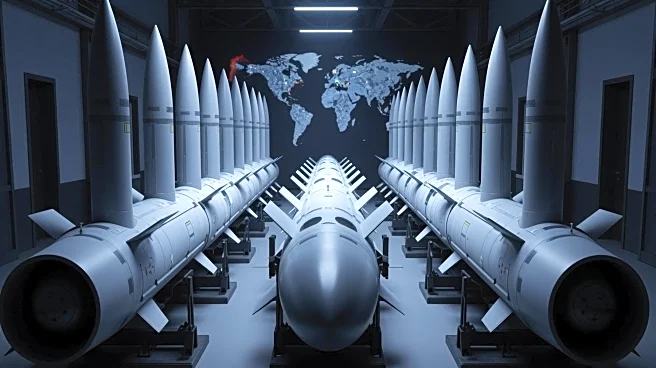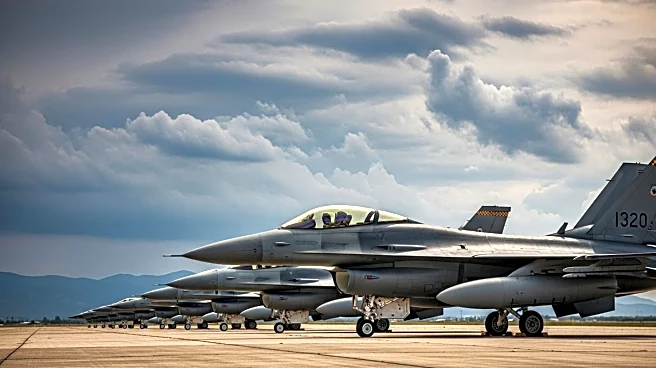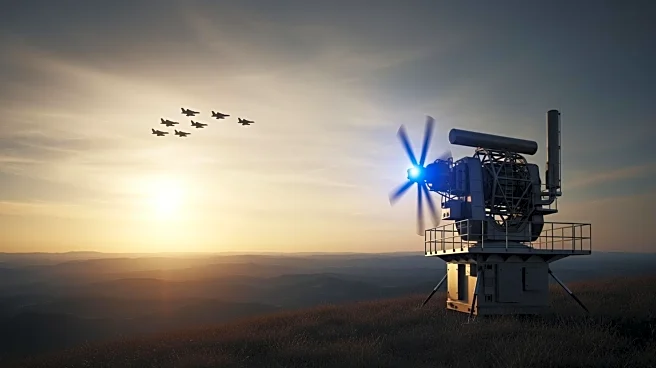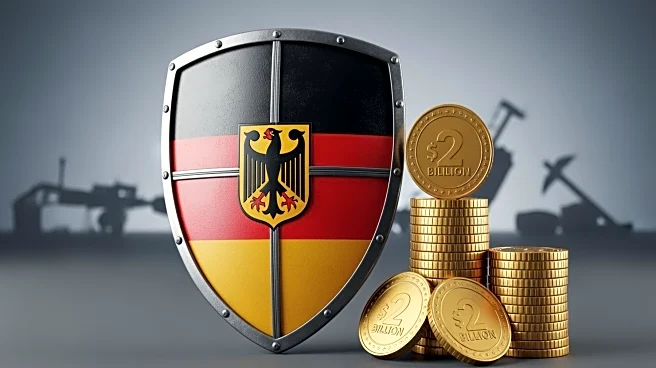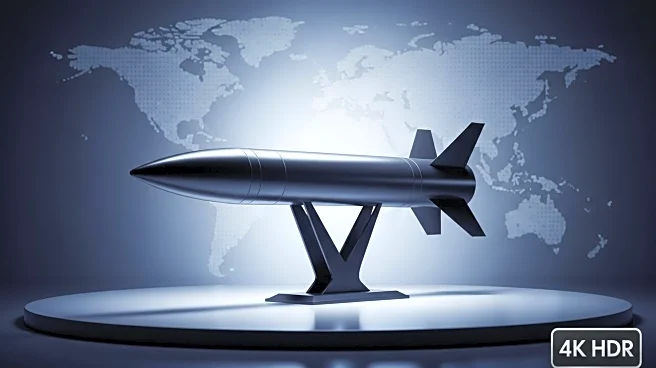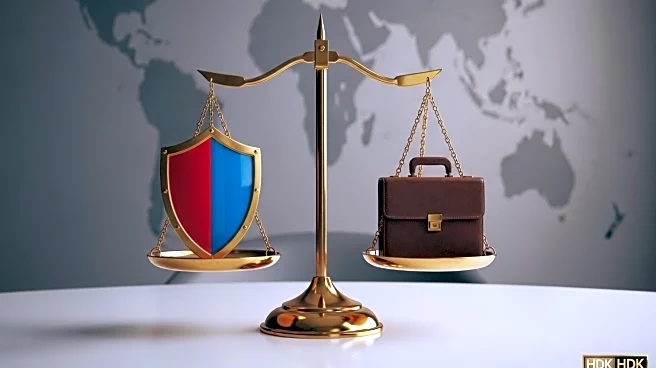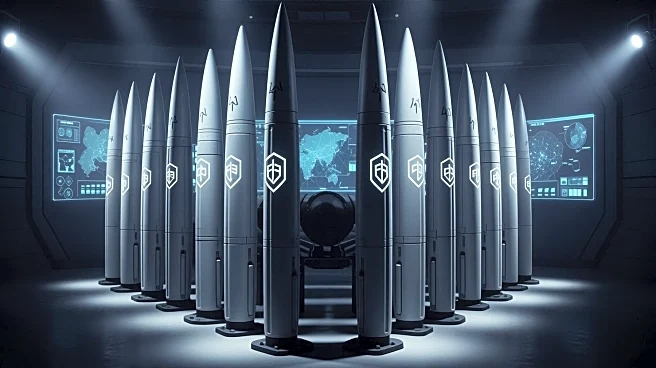What's Happening?
Russia has significantly expanded its tank force, focusing on the production and upgrade of its main battle tanks (MBTs) such as the T-72B3, T-80BVM, and T-90M. According to recent analysis, the number
of units operating these tanks has increased since the invasion of Ukraine. The T-90M, in particular, has seen a substantial rise in numbers, from 50 to 500 units. The production of new T-80 hulls and the GTD-1000TF multifuel gas turbine engine has resumed, enhancing the mobility and operational capabilities of the T-80BVM. Uralvagonzavod (UVZ), Russia's largest tank production plant, is expected to produce 250 T-90M tanks this year, with the T-90M set to become the mainstay of Russia's tank fleet.
Why It's Important?
The expansion of Russia's tank force is a critical development in the ongoing military dynamics in Eastern Europe. The increased production and upgrade of tanks like the T-90M and T-80BVM reflect Russia's strategic focus on enhancing its military capabilities. This move could impact regional security, as neighboring countries may perceive it as a threat, potentially leading to an arms race. The modernization of Russia's tank fleet also underscores its commitment to maintaining a robust defense posture, which could influence geopolitical relations and military strategies in the region.
What's Next?
As Russia continues to expand its tank force, neighboring countries and NATO allies may respond by bolstering their own military capabilities. This could lead to increased military spending and strategic deployments in Eastern Europe. Additionally, the production and deployment of advanced tanks may prompt discussions on arms control and military transparency among international stakeholders. The ongoing conflict in Ukraine will likely remain a focal point for assessing the impact of Russia's military enhancements.
Beyond the Headlines
The resurgence of Russia's tank production highlights the country's reliance on Soviet-era military strategies, focusing on scale and social goals rather than optimizing output. This approach may reflect broader economic and political priorities within Russia, emphasizing the importance of military strength in national identity and governance. The development also raises questions about the efficiency and sustainability of Russia's military-industrial complex in the face of international sanctions and economic challenges.
